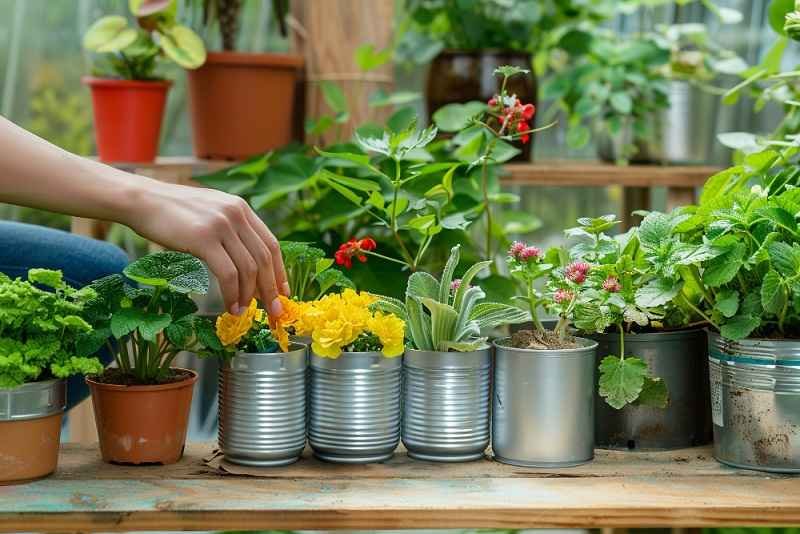Introduction:
Starting a vegetable garden is a rewarding endeavor that not only provides fresh produce but also enhances the beauty of your outdoor space. Whether you have a sprawling backyard or a small balcony, there are countless ways to create a productive and visually appealing vegetable garden. In this article, we’ll explore creative vegetable garden ideas that will inspire you to grow your own food while maximizing space and improving aesthetics.
Benefits of Growing a Vegetable Garden
Before diving into specific ideas, let’s briefly discuss the numerous benefits of cultivating your own vegetable garden:
- Fresh Produce: Enjoy fresh, organic vegetables right at your fingertips, which can enhance your meals and improve your diet.
- Cost-Effective: Growing your own vegetables can significantly reduce grocery bills, especially during peak harvest seasons.
- Environmental Impact: Home gardens can reduce your carbon footprint by minimizing the need for transportation and packaging associated with store-bought produce.
- Mental Health Benefits: Gardening is a therapeutic activity that can reduce stress and promote well-being.
- Educational Opportunities: Gardening is a great way to learn about plants, nutrition, and sustainability, making it an excellent activity for families.
ImaginativeVegetable Garden Ideas
1. Vertical Gardening
For those with limited space, vertical gardening is an excellent way to maximize your growing area. Utilize vertical structures such as trellises, wall planters, or hanging pots to grow climbing vegetables like tomatoes, cucumbers, and beans.
- Benefits: Saves space, improves air circulation, and makes harvesting easier.
- How to Start: Install trellises against walls or fences and plant climbing vegetables at their base. Use wall-mounted planters for herbs and small leafy greens.
2. Container Gardening
Container gardening is ideal for small spaces, patios, or balconies. You can grow a variety of vegetables in pots, raised beds, or even repurposed containers like old buckets or wooden crates.
- Benefits: Flexible and mobile; containers can be moved to access sunlight or protect plants from harsh weather.
- How to Start: Choose containers with adequate drainage, fill them with quality potting soil, and select vegetables that thrive in containers, such as peppers, lettuce, or radishes.
3. Raised Bed Gardens
Building raised beds allows for better soil control, improved drainage, and ease of access for gardening. These elevated structures can be filled with rich soil and compost, making it easier to grow a variety of vegetables.
- Benefits: Reduces soil compaction, extends the growing season, and can be designed for aesthetic appeal.
- How to Start: Construct beds using wood, stone, or bricks. Fill with a mix of topsoil, compost, and organic matter for optimal growth.
4. Companion Planting
Companion planting involves growing different plants in proximity for mutual benefits. This method can improve growth, deter pests, and enhance flavor.
- Benefits: Maximizes space and productivity while promoting healthier plants.
- How to Start: Research compatible plants, such as tomatoes with basil (which can enhance flavor) or marigolds (which repel pests). Plan your garden layout accordingly.
5. Herb Spiral Garden
An herb spiral is a vertical garden design that allows for diverse herb growth in a compact space. The spiral structure provides various microclimates, catering to different herb needs.
- Benefits: Efficient use of space, easy access to herbs, and a beautiful focal point in your garden.
- How to Start: Create a spiral with stones or bricks, filling the center with rich soil. Plant herbs according to their water and light requirements, placing drought-tolerant herbs at the top and moisture-loving herbs at the base.
6. Edible Landscaping
Incorporate vegetables and herbs into your traditional landscaping. This approach blends aesthetics with functionality, allowing you to enjoy beauty while growing food.
- Benefits: Enhances the visual appeal of your yard while providing fresh produce.
- How to Start: Mix ornamental plants with vegetable varieties. For example, plant kale or Swiss chard alongside flowering plants for a colorful and productive garden.
7. Succession Planting
Maximize your harvest by practicing succession planting, where you plant crops at intervals to ensure continuous production throughout the growing season.
- Benefits: Increases yield and minimizes periods of low harvest.
- How to Start: Plan your planting schedule to include fast-growing crops (like lettuce or radishes) followed by slower-growing ones (like tomatoes or peppers) in the same space as the earlier crops are harvested.
Tips for Maintaining a Healthy Vegetable Garden
To ensure your vegetable garden thrives, consider these essential maintenance tips:
- Regular Watering: Consistent watering is crucial, especially during dry spells. Use mulch to retain moisture and reduce weed growth.
- Soil Health: Test your soil and amend it with organic matter, compost, or fertilizers as needed to ensure adequate nutrients.
- Pest Management: Monitor for pests and diseases regularly. Use organic solutions like neem oil or insecticidal soap, and encourage beneficial insects like ladybugs.
- Crop Rotation: Practice crop rotation to prevent soil depletion and reduce disease risk by alternating plant families each season.
Conclusion
Creating a vegetable garden is a fulfilling and beneficial endeavor that anyone can undertake, regardless of space constraints. By exploring innovative ideas such as vertical gardening, container gardening, and companion planting, you can design a garden that is both productive and beautiful. With proper care and maintenance, your vegetable garden can provide fresh produce, improve your mental well-being, and enhance the aesthetics of your outdoor space.
Embrace the joy of gardening and start your vegetable garden today—your taste buds and health will thank you!
If you’d like more specific vegetable gardening tips or have questions about particular crops, feel free to ask!
For more, visit our website, Homethreads






